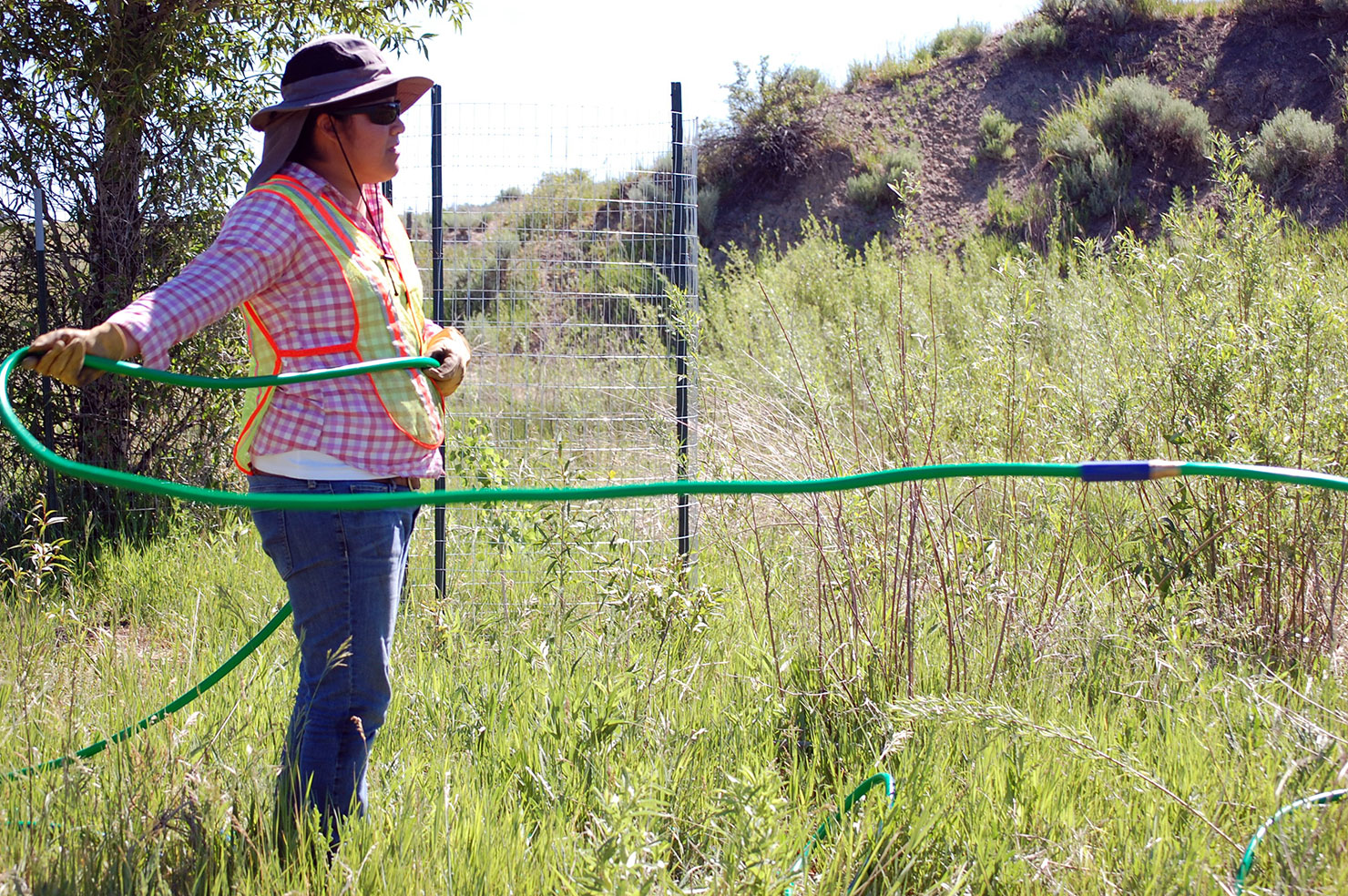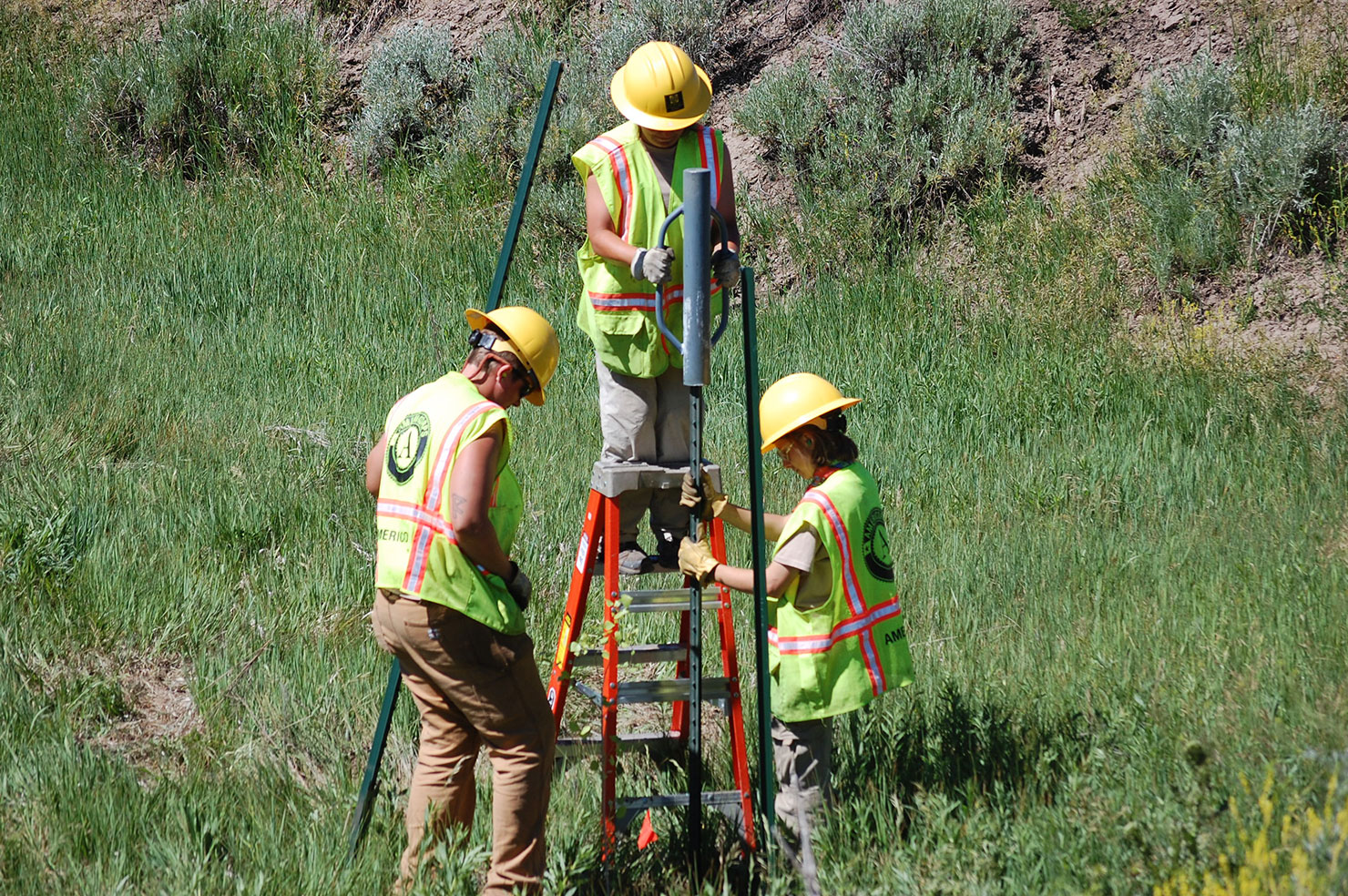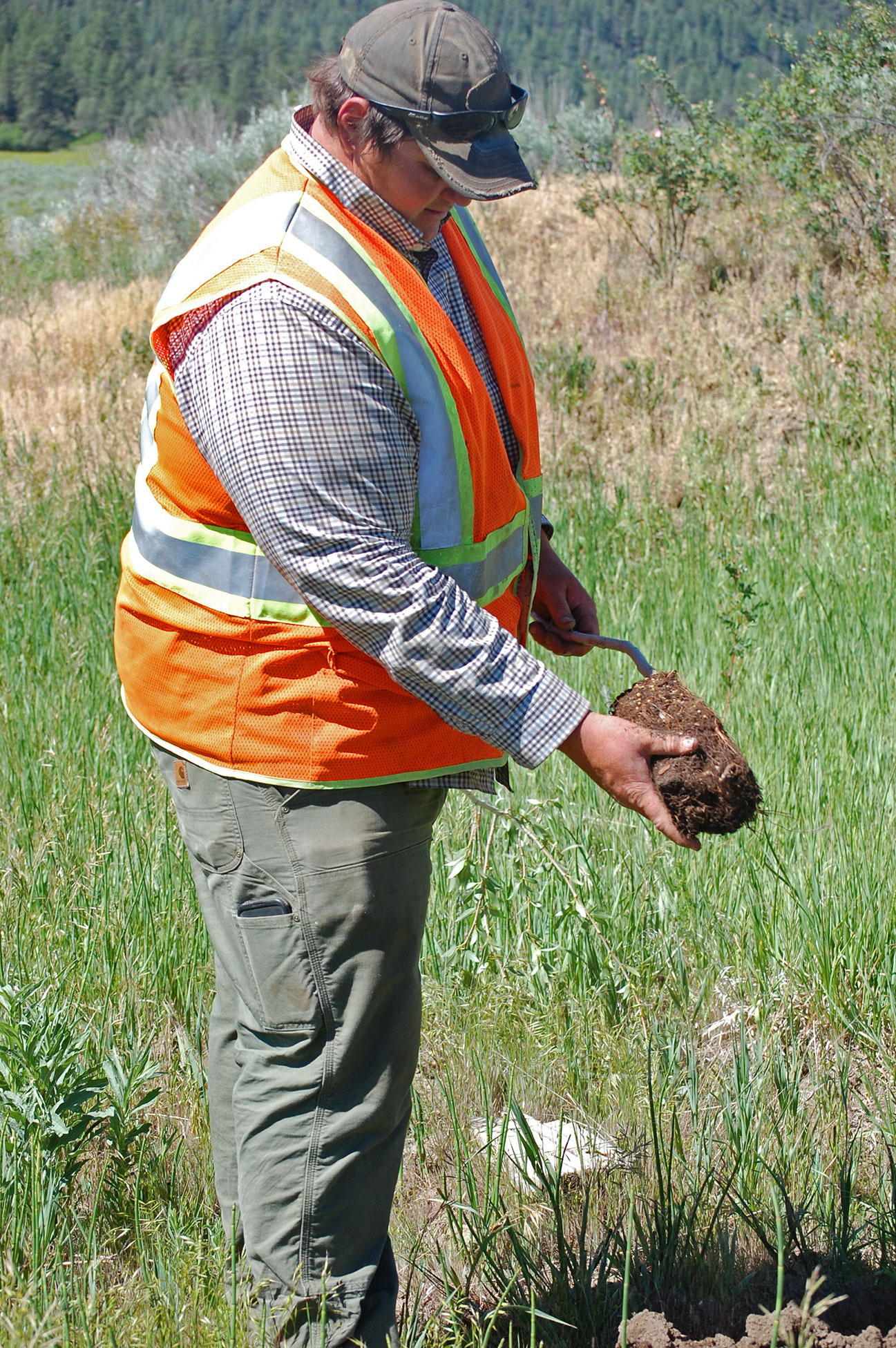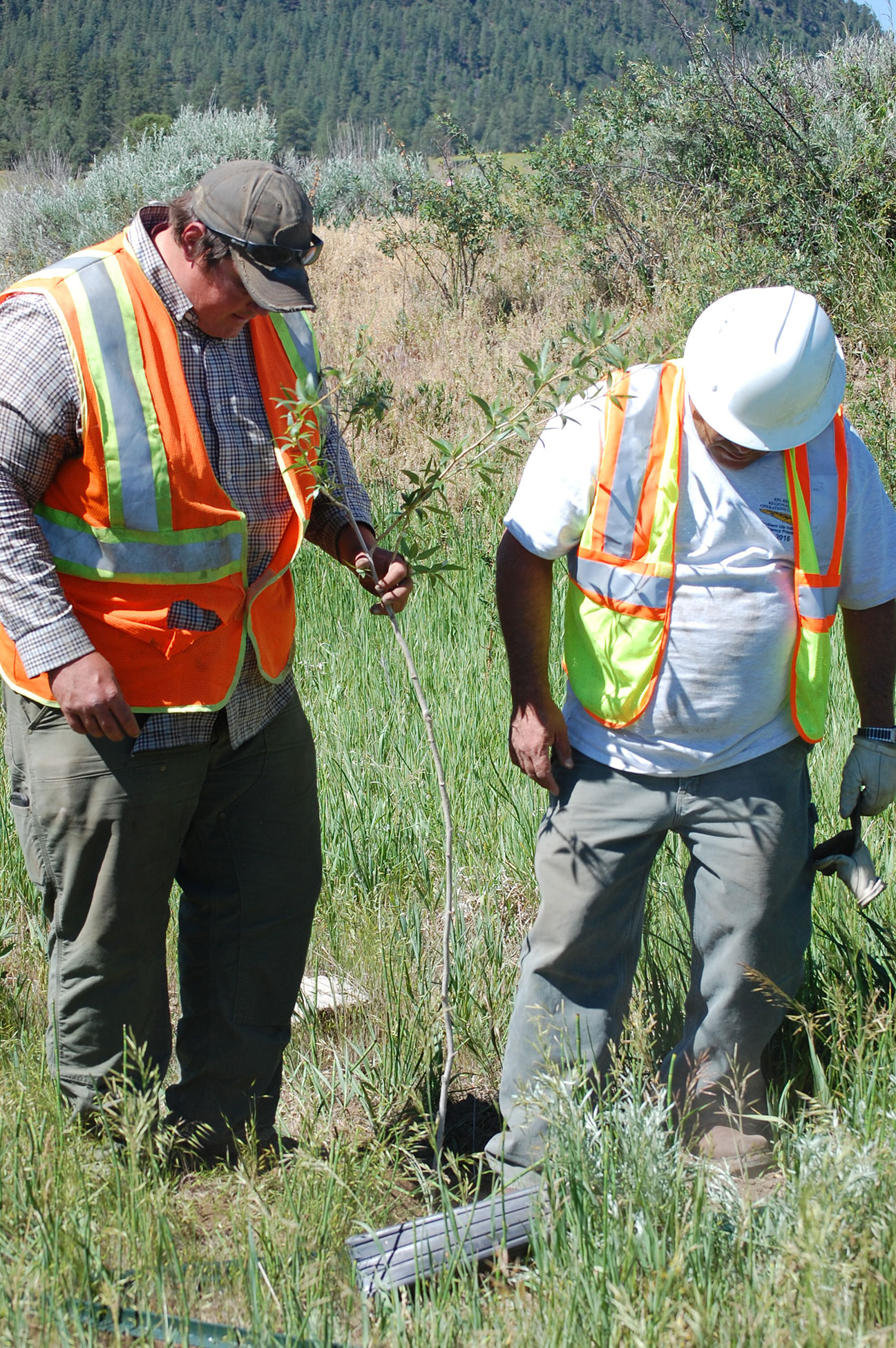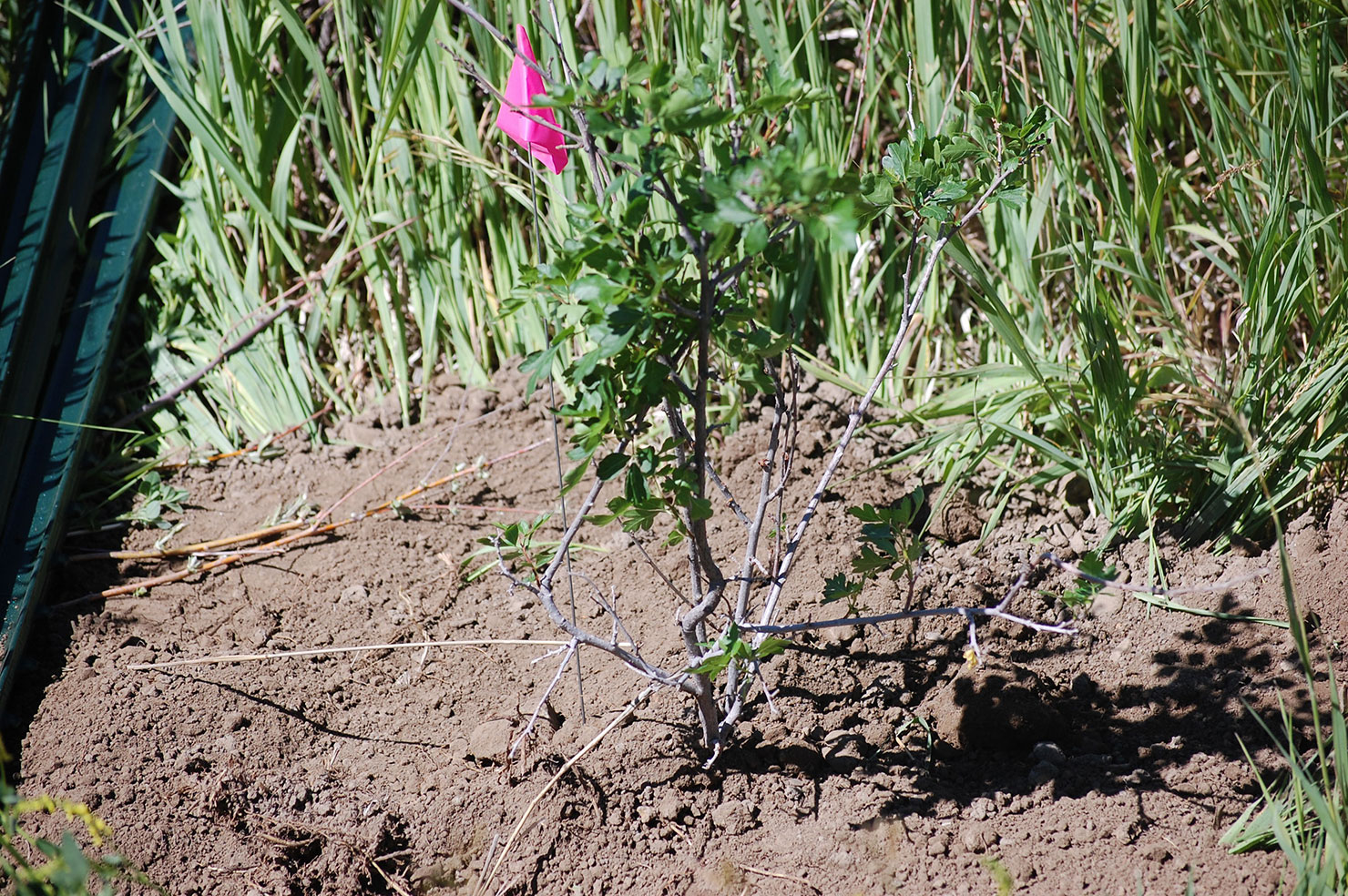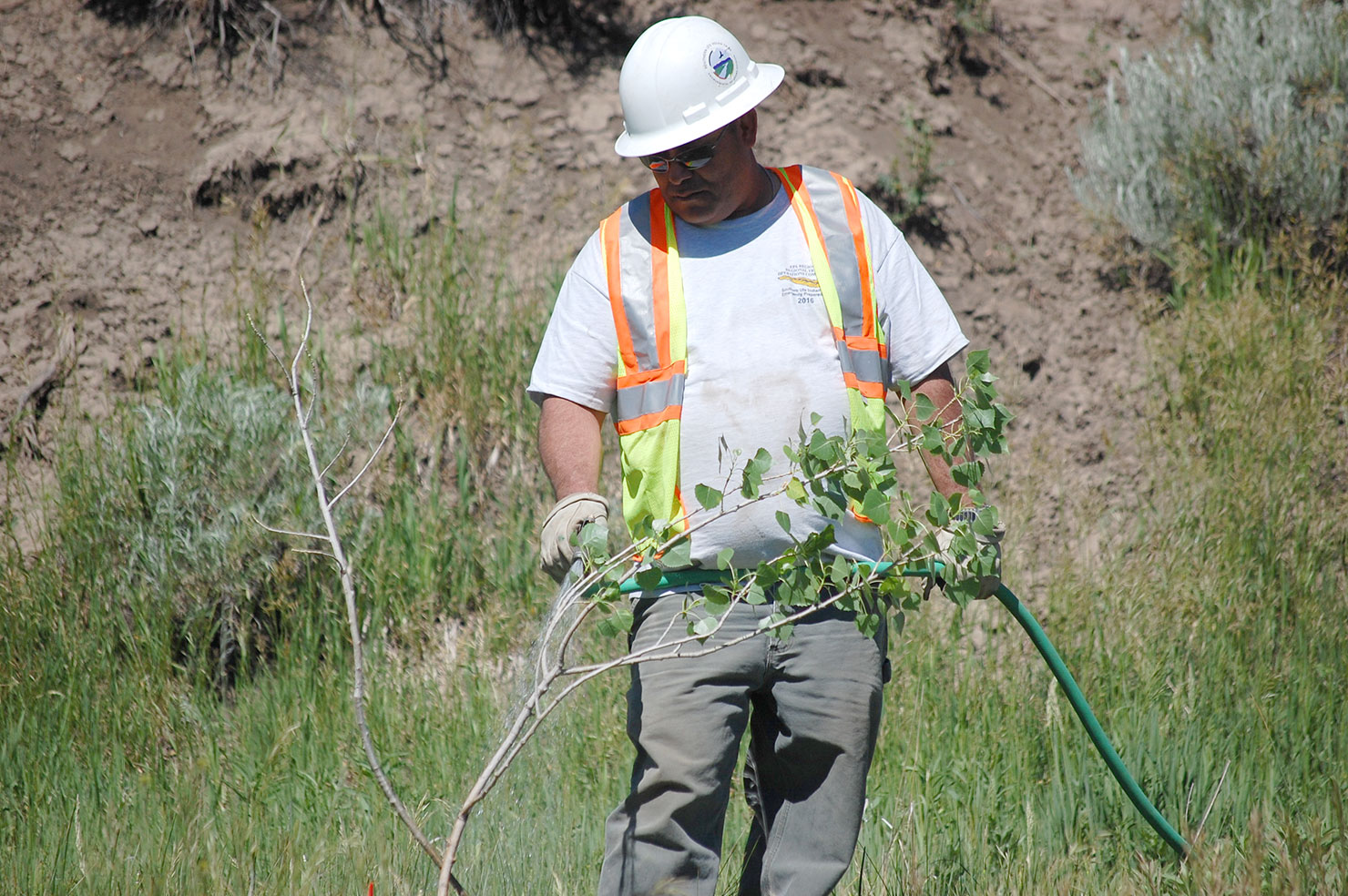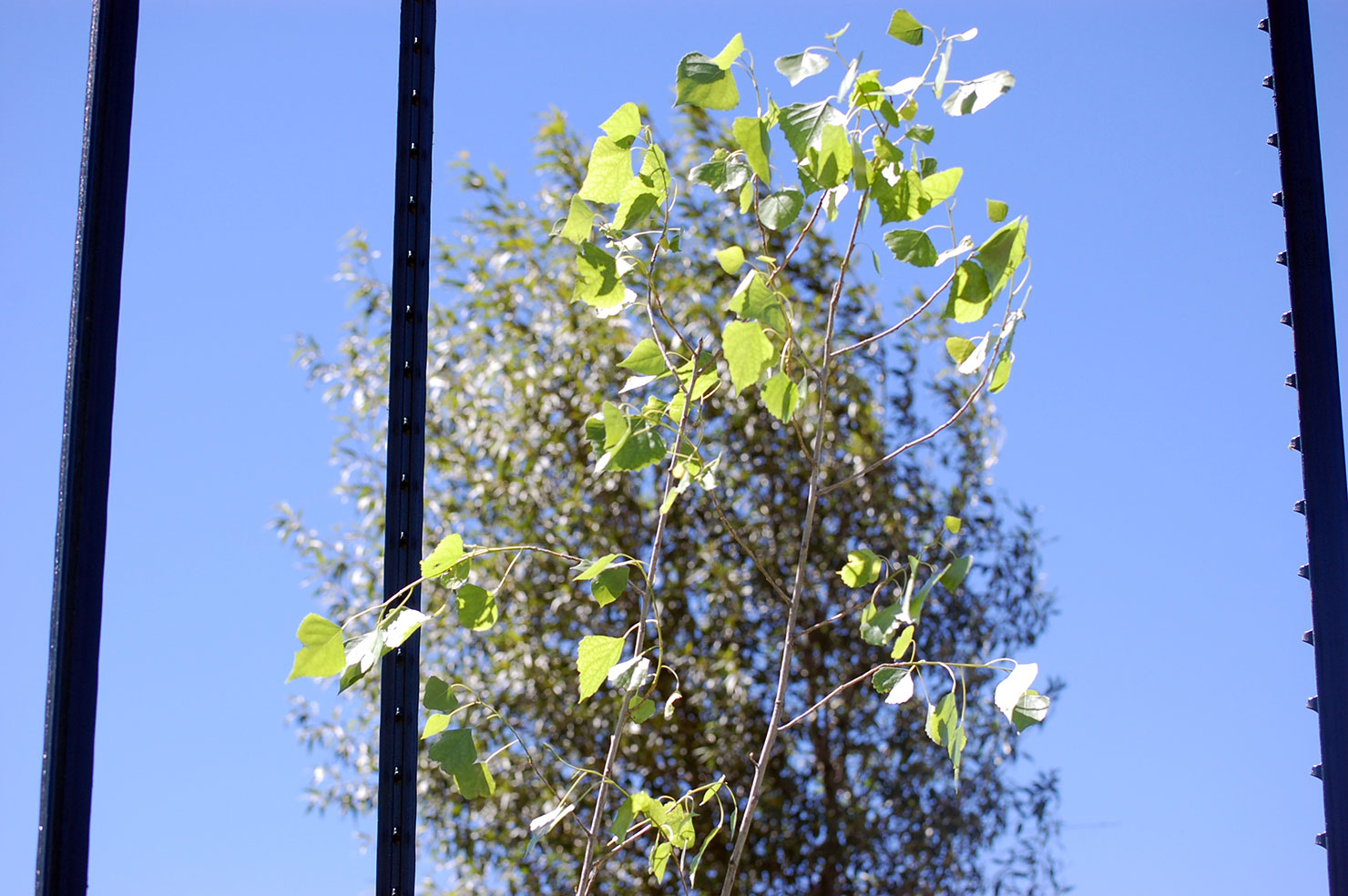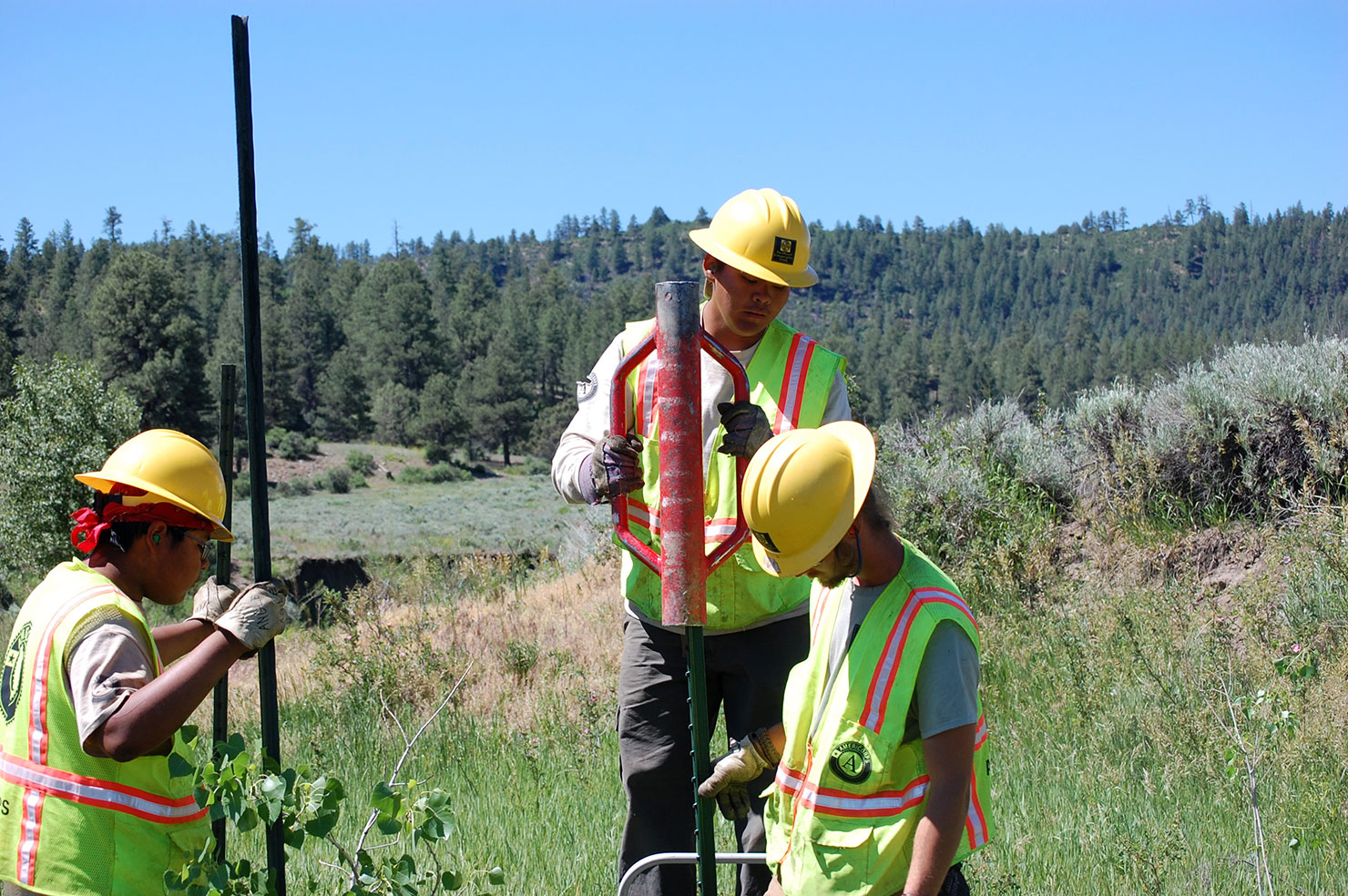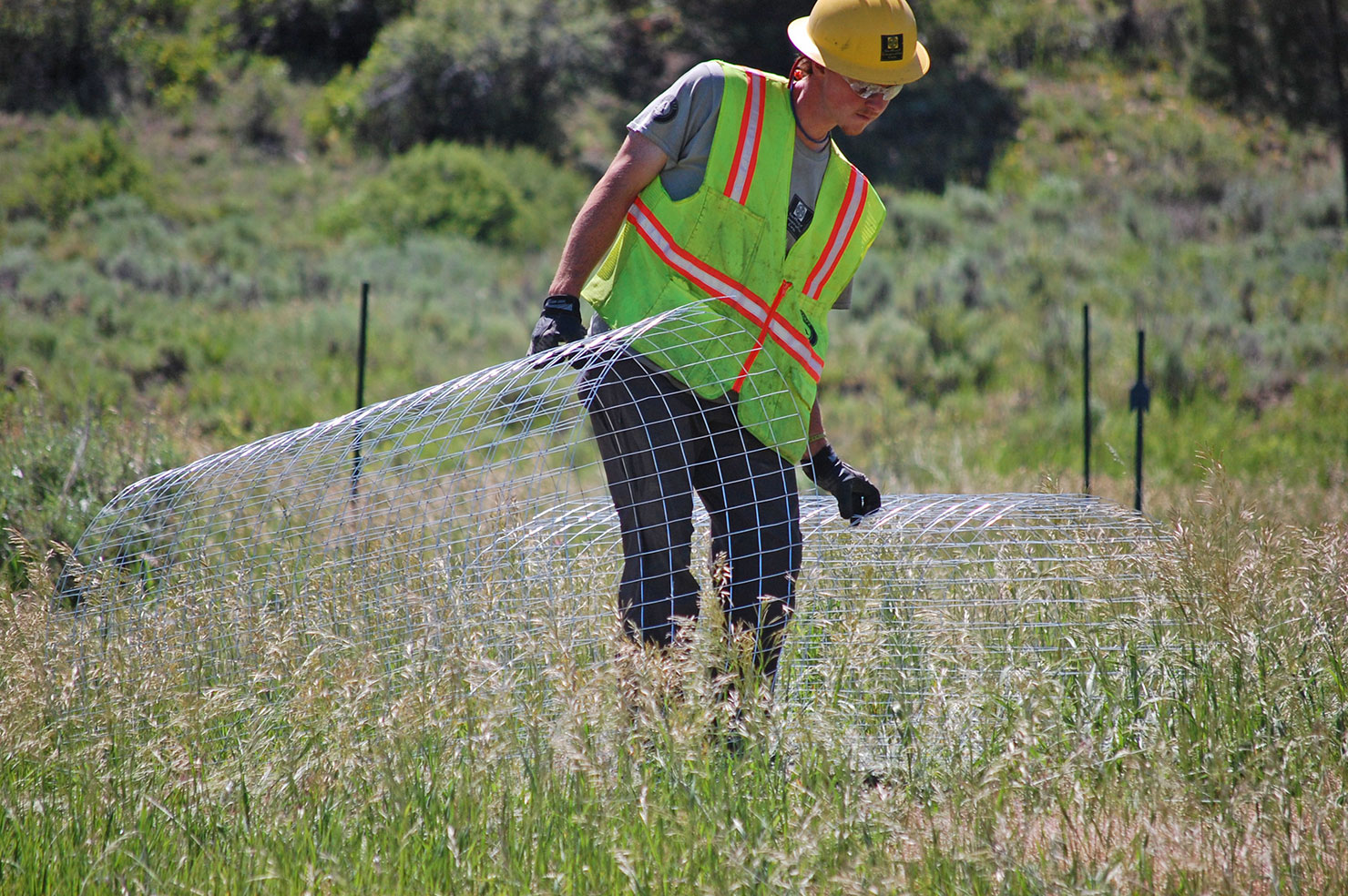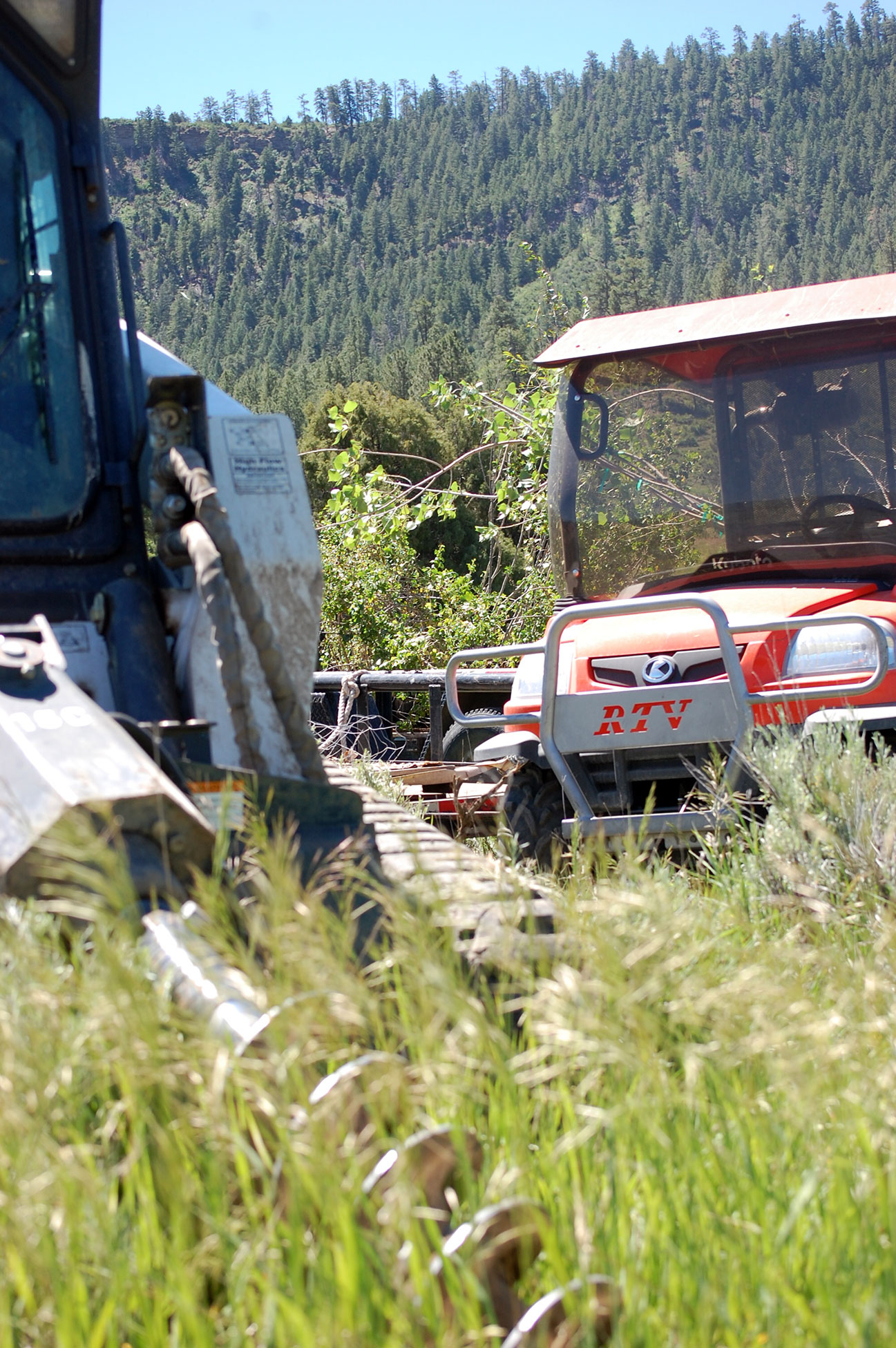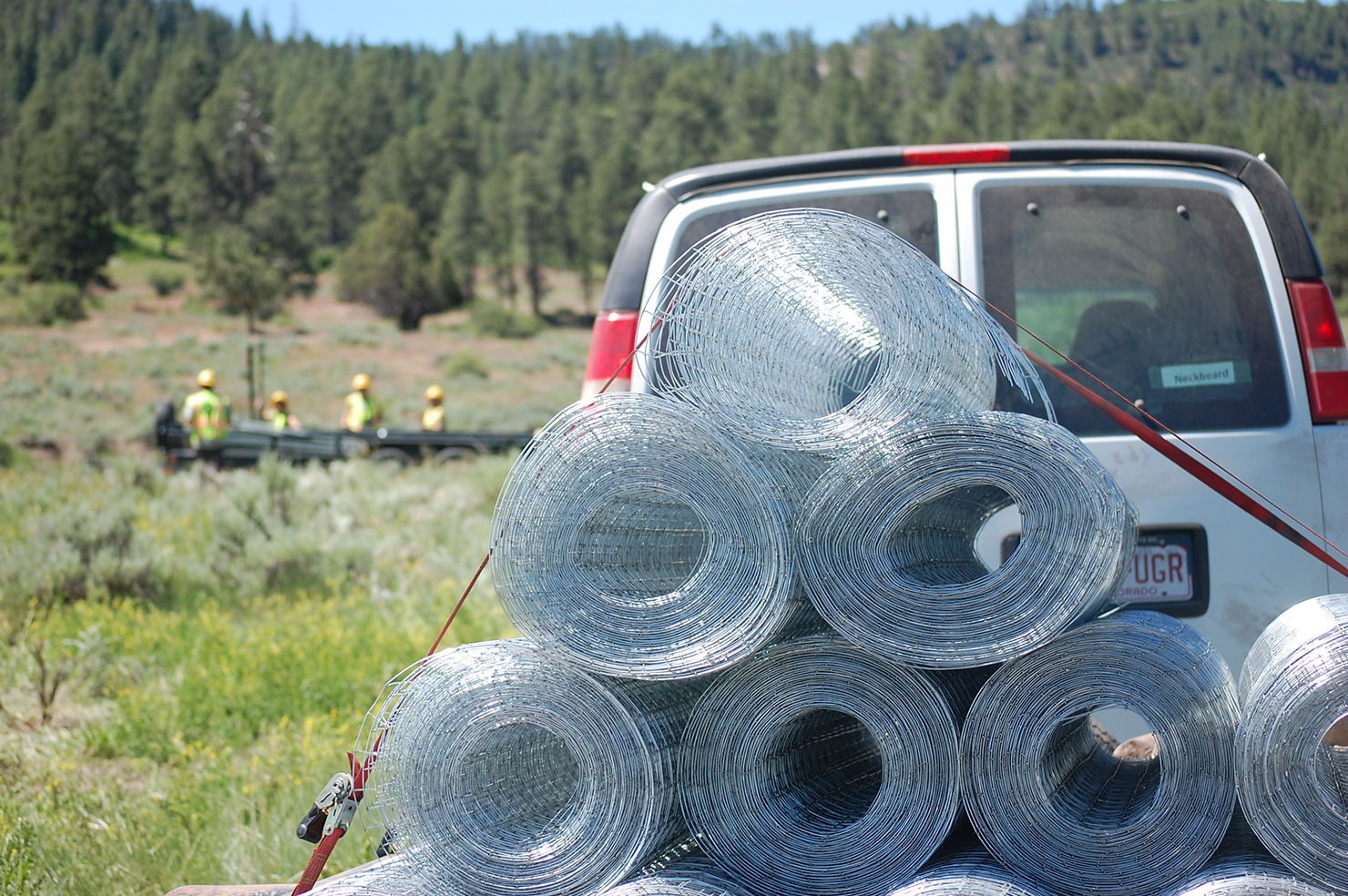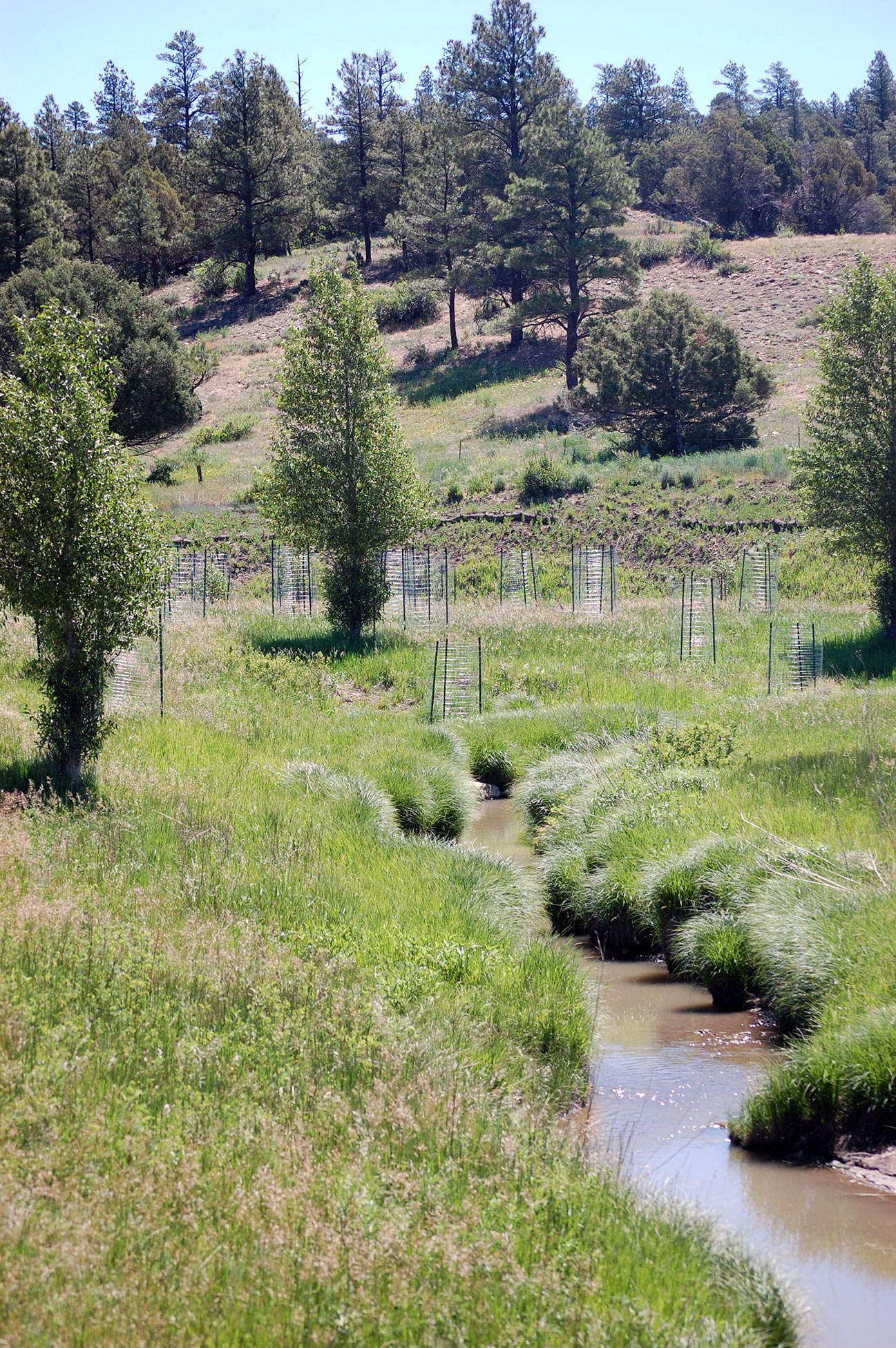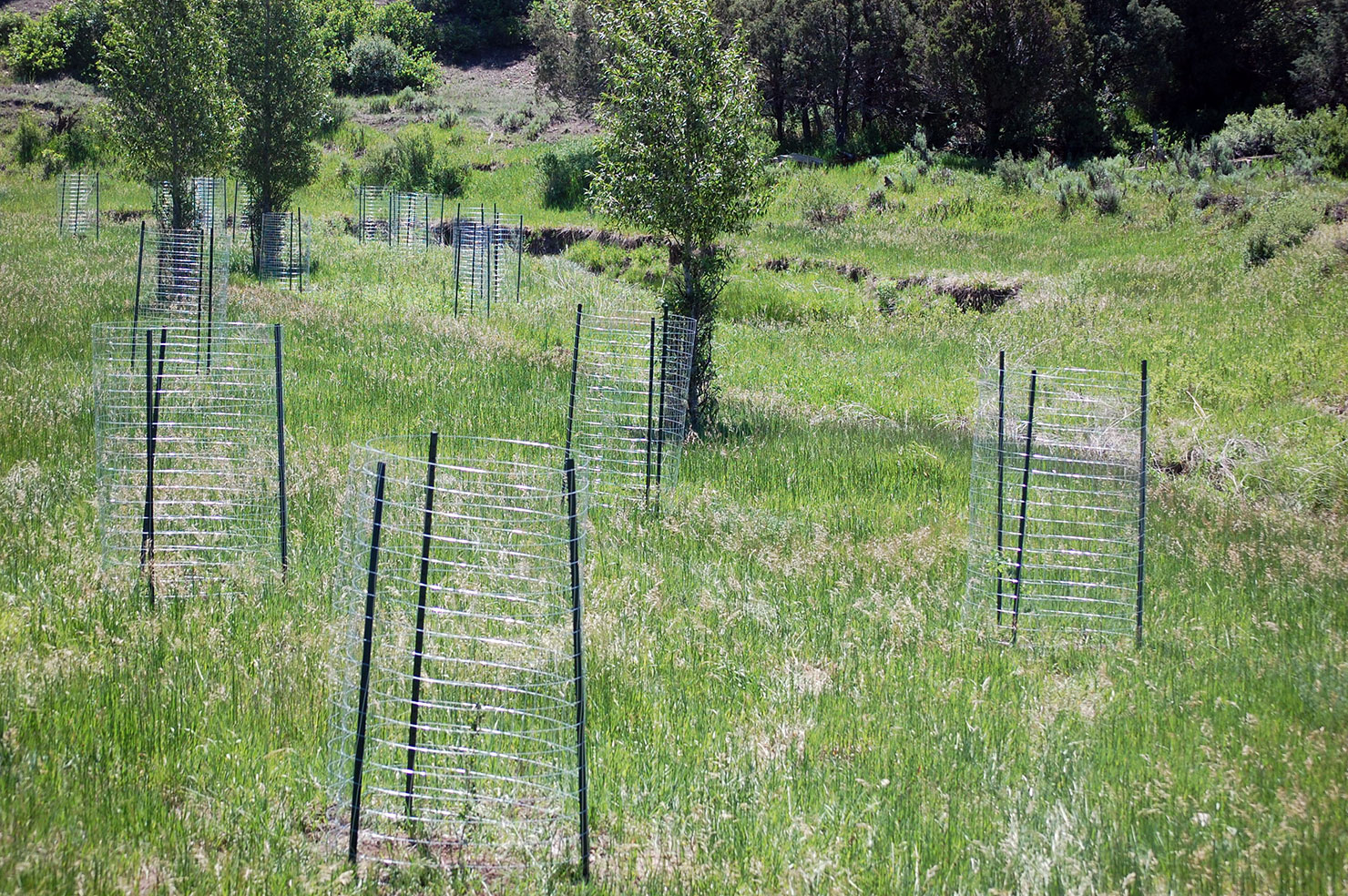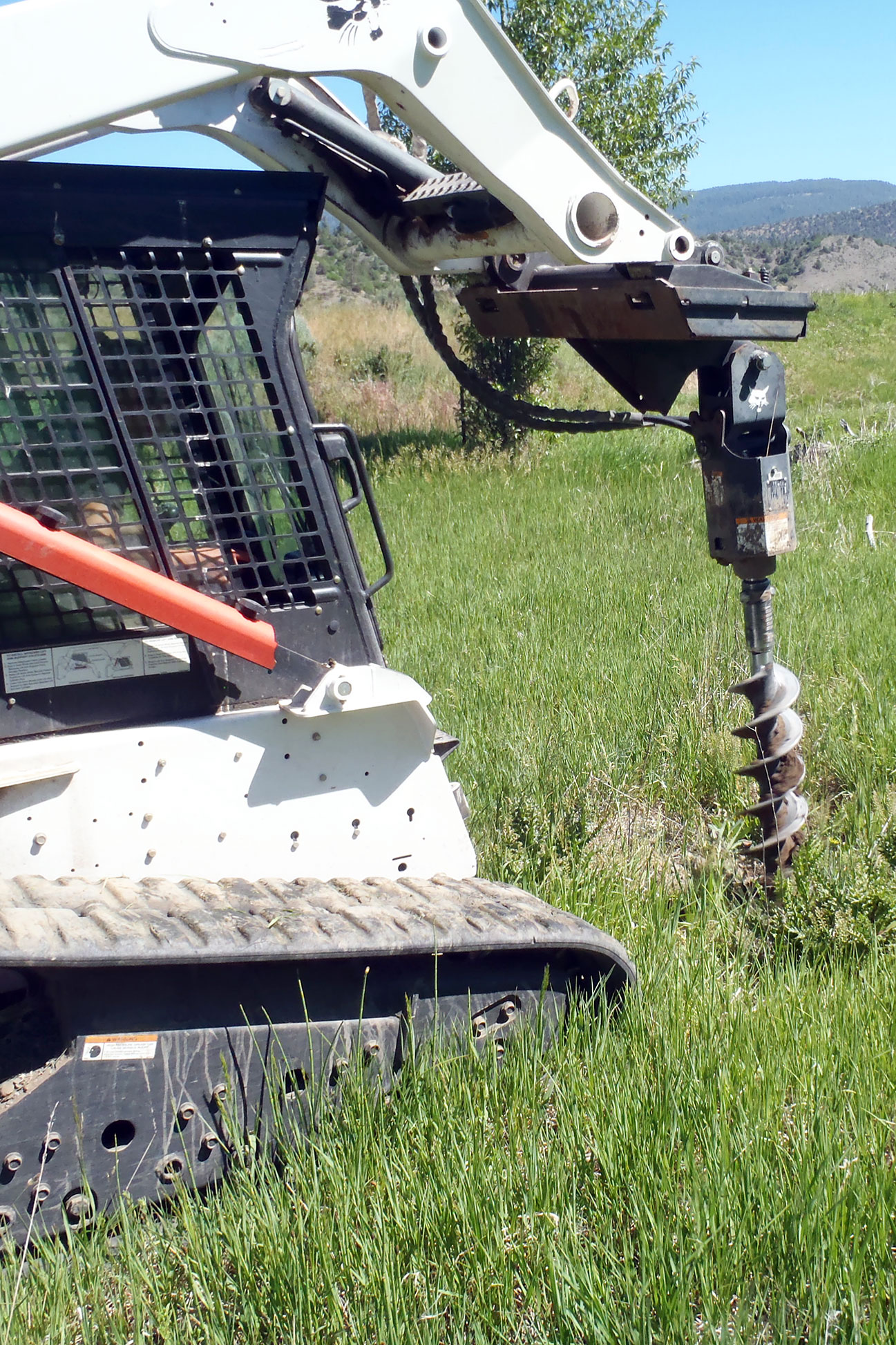The Southern Ute Environmental Programs Division (EPD) is working hard at reestablishing tree growth downstream from Lake Capote. The riparian enhancement project included the planting of approximately 1,100 plants 1.7 miles along Stollsteimer Creek totaling 9.7 acres of planted ground.
Southern Ute EPD Senior Water Quality Specialist, Pete Nylander and a 10-person crew, along with assistance from other Southern Ute tribal departments planted the trees from June 13 through June 16.
“The area we are replanting was overgrazed, right up to the creek, with bad land use practices – we want to reestablish the forestation so the wildlife can enjoy the vegetation,” Nylander said.
The area south of Lake Capote is established as a conservation area. Archeologists have already done surveys to the land prior to the Wildlife Divisions tree planting five years ago.
EPD Recycling Technician, Phillip Martinez also assisted during the week with planting and watering, two additional EPD interns also watered the trees.
Southwest Conservation Corps (SCC) crewmembers constructed the caging and provided additional labor. SCC also operates conservation service programs across Southern Colorado and Northern New Mexico.
Chokecherry, Golden Current, Woods Rose, Redosier Dogwood, Narrow leaf Cottonwood, Rio Grande Cottonwood, Three Leaf Sumac and Silver Buffaloberry were planted and all had to be caged to protect them from being damaged by elk and beavers.
The purpose of the project is to improve water quality along Stollsteimer Creek, but there are other benefits to wildlife and the land by having a healthy riparian area.
The project was funded through EPA grant funds. The project was successful due to the Southern Ute Range and Wildlife Divisions assistance with labor and use of their equipment. The Agriculture Division also helped unload caging materials with their forklift.
“There is no way I could handle this project by myself, it’s great to get the support from different departments.” Nylander said.
The project complemented previous work to Stollsteimer Creek done by the Bureau of Indian Affairs (BIA) Forestry Division. The division provided hand augers for the project use of their shade house to store the plants, and technical assistance on the plants as well.
The Southern Ute Wildlife Division planted the larger existing trees along the creek.
“It’ nice to rebuild and have a riparian forest along the creek and in 20 years to see the lands growing for the better,” Nylander said. “We are continuing the work the Wildlife [Division] has already done 5 years ago.”

